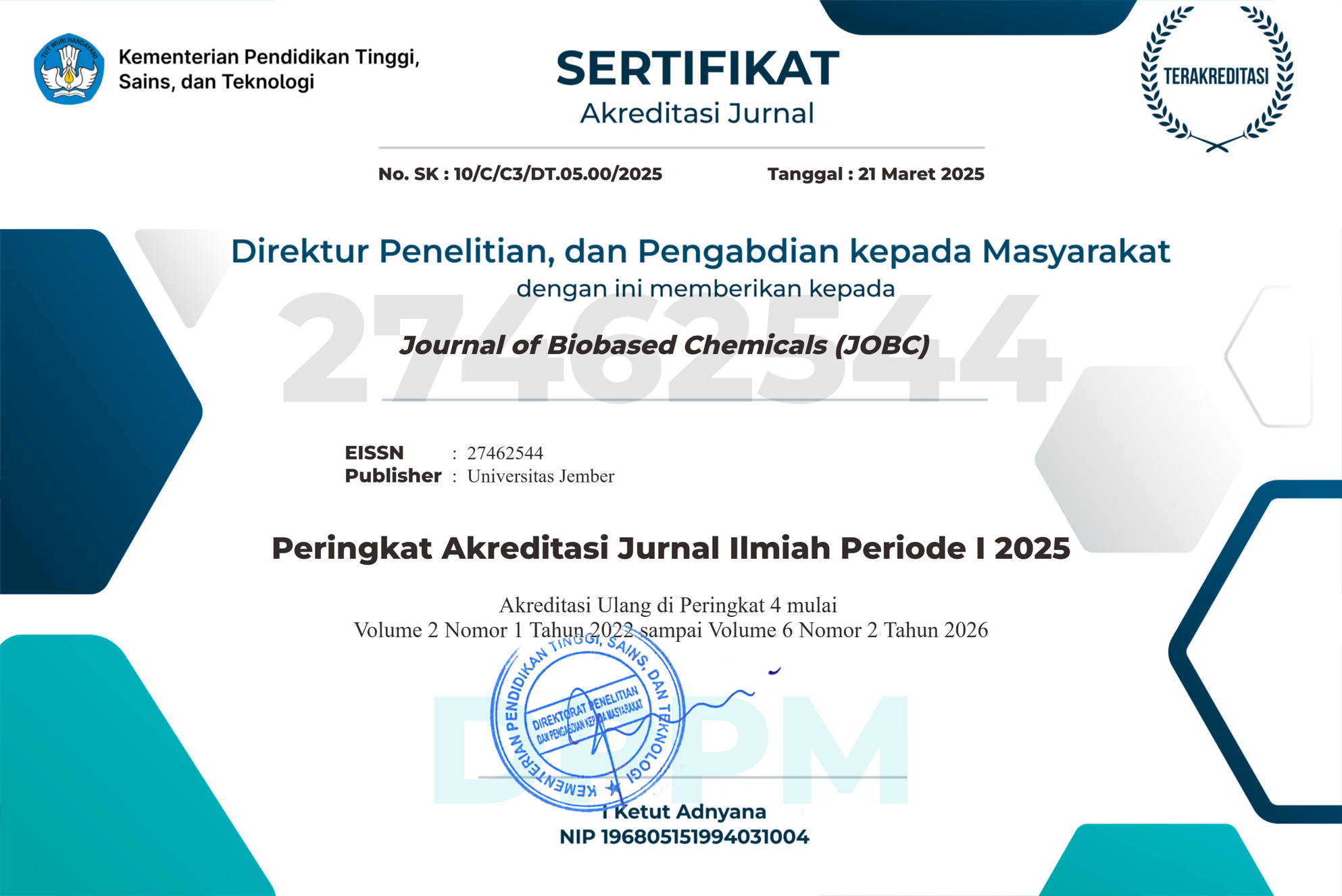Microwave Assisted Hydrolysis Ulva sp. Using HCl for the Production of Bioethanol Raw Materials
DOI:
https://doi.org/10.19184/jobc.v2i2.272Keywords:
Bioethanol, reducing sugar, hydrolysis, microwave assisted hydrolysis, Ulva sp.Abstract
The challenges faced by the Indonesian state are increasing greenhouse gases, climate change, and depleting fossil fuel reserves. This requires the exploration of alternative energy that is environmentally friendly and sustainable. Algae biomass, especially Ulva sp. is one of the resources that have the potential for bioethanol production as an alternative energy producer. The purpose of this study is to determine the potential of Ulva sp. as raw material for bioethanol and to determine the effect of particle size, solvent concentration, and power on the hydrolysis process. This study used Ulva sp. as raw material. hydrolyzed with HCl solvent using the microwave assisted hydrolysis method. Hydrolysis with HCl concentrations of 0.1 N, 1 N, 2 N, variations of microwave power 150 watts, 300 watts, 450 watts, and particle sizes of 60 mesh, 80 mesh, and 100 mesh. Measurement of reducing sugar levels was carried out using the dinitro salicylic acid (DNS) method. The results showed that the best conditions for hydrolysis were when the HCl concentration was 0.1 N, the microwave power was 450 watts, and the particle size was 80 mesh which resulted in a reducing sugar content of 20.751 mg/mL.








